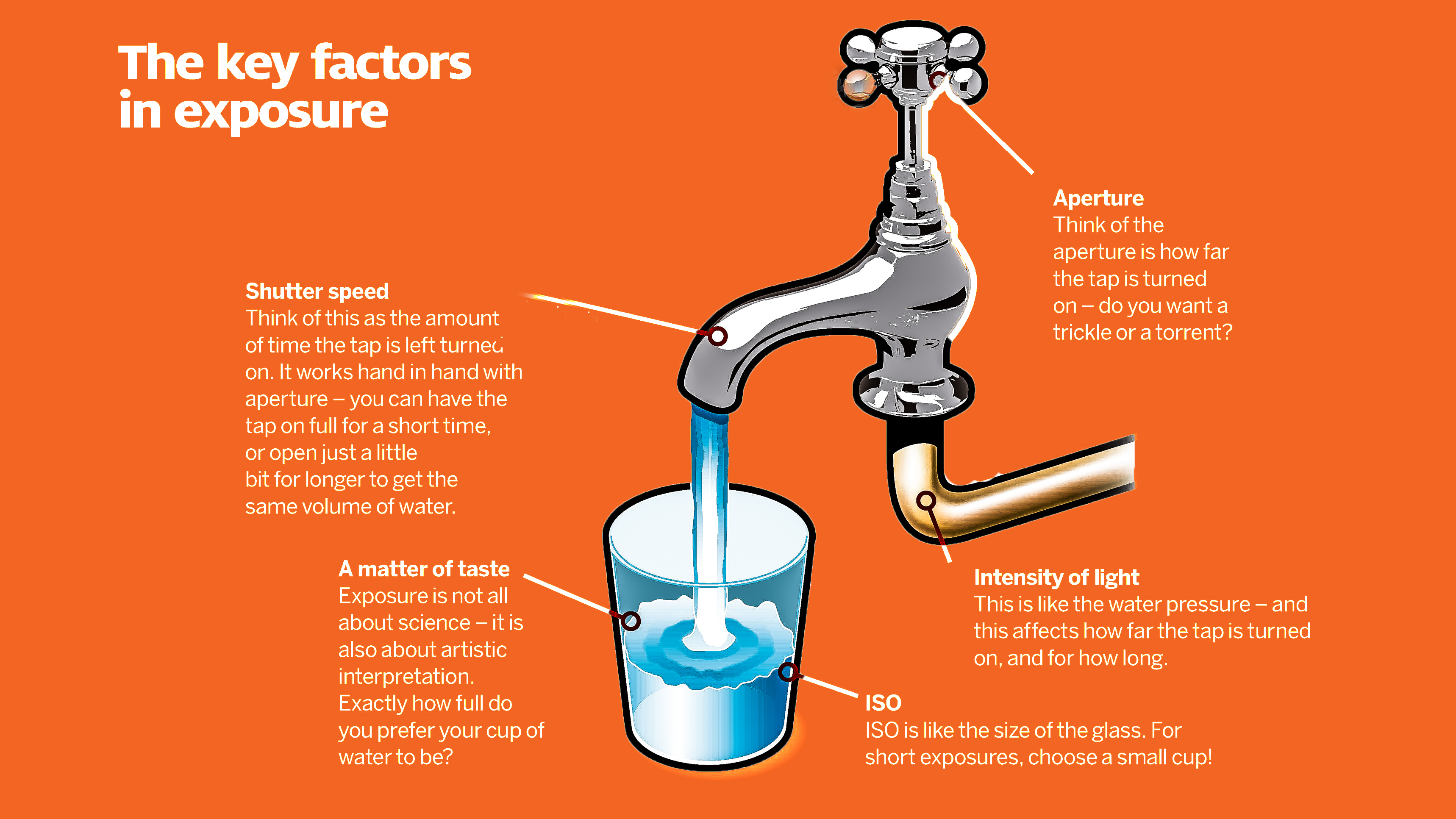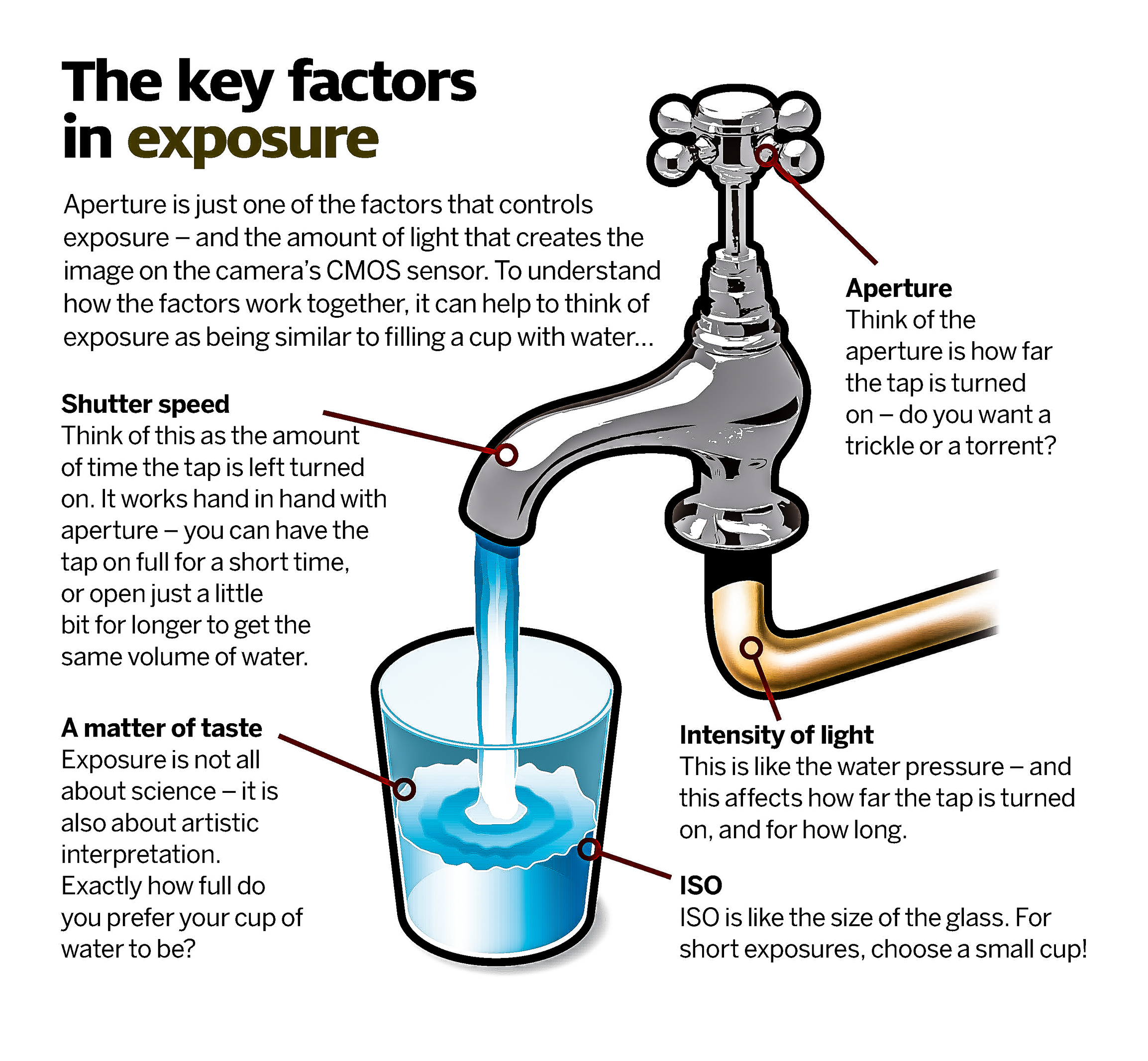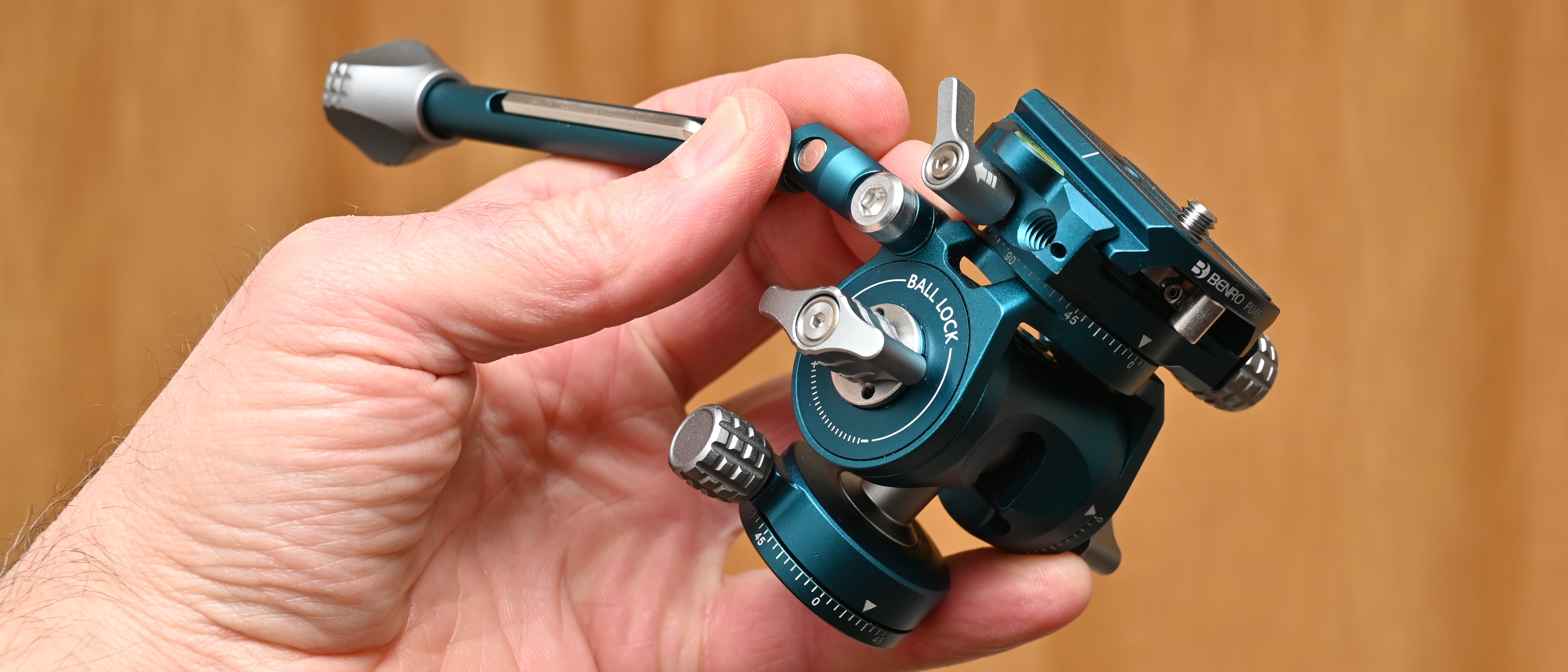Cheat sheet: Five factors that affect exposure in photography
Think of exposure like filling a cup with water – there are five different factors to take into account

Aperture is one of three key components that make up the exposure triangle, which controls the amount of light that creates the image on the camera’s CMOS sensor. But I've always thought of there being five different factors that make up the right exposure for your photographs. To understand how the factors work together, it can help to think of exposure as being similar to filling a cup with water…

Think of the aperture is how far the faucet is turned on – do you want a trickle or a torrent? Think of shutter speed as the amount of time the tap is left turned on. It works hand in hand with aperture – you can have the tap on full for a short time,
or open just a little bit for longer to get the same volume of water. The ISO sensitivity setting is like the size of the glass. For short exposures, choose a small cup! Exposure is also dependent on the light intensity; This is like the water pressure – and this affects how far the tap is turned on, and for how long. Finally, exposure is not all about science – it is also about artistic interpretation. Exactly how full do you prefer your cup of water to be?
Altering the aperture is one of the photographer’s most potent weapons, but this apparently simple control can lead to confusion. The exact setting used can create varied – and seemingly contradictory – effects. And then there is the peculiar number scale used – the numbers themselves appear randomly generated, and arranged in the wrong order!
First and foremost, the aperture is a simple hole – an opening that can be varied in size, so as to control the amount of light reaching the camera sensor. Used in conjunction with shutter speed (the length of time the sensor is exposed to light), the aperture lets you match the exposure to the brightness of the scene. The wider the hole, the more light that is let in – helping you to compensate for darker conditions, say, or letting you use a faster shutter speed.
The aperture is not actually in the camera – but in the lens. As a mirrorless camera's or DSLR's lens is interchangeable, the range of aperture settings available varies depending on the particular lens used. Notably, expensive lenses tend to have significantly wider maximum apertures than budget zooms.
What frustrates everyone new to photography is the f/stop scale used to measure the size of the aperture. The strange numbering system, however, is not random. The first thing to realize is that the numbers are not integers, but fractions. So f/4 is not 4 but a quarter.
Read more
The exposure triangle explained
How to understand f-stops
How to understand ISO settings
Photography tips
Photography cheat sheets
Get the Digital Camera World Newsletter
The best camera deals, reviews, product advice, and unmissable photography news, direct to your inbox!
Chris George has worked on Digital Camera World since its launch in 2017. He has been writing about photography, mobile phones, video making and technology for over 30 years – and has edited numerous magazines including PhotoPlus, N-Photo, Digital Camera, Video Camera, and Professional Photography.
His first serious camera was the iconic Olympus OM10, with which he won the title of Young Photographer of the Year - long before the advent of autofocus and memory cards. Today he uses a Nikon D800, a Fujifilm X-T1, a Sony A7, and his iPhone 15 Pro Max.
He has written about technology for countless publications and websites including The Sunday Times Magazine, The Daily Telegraph, Dorling Kindersley, What Cellphone, T3 and Techradar.

